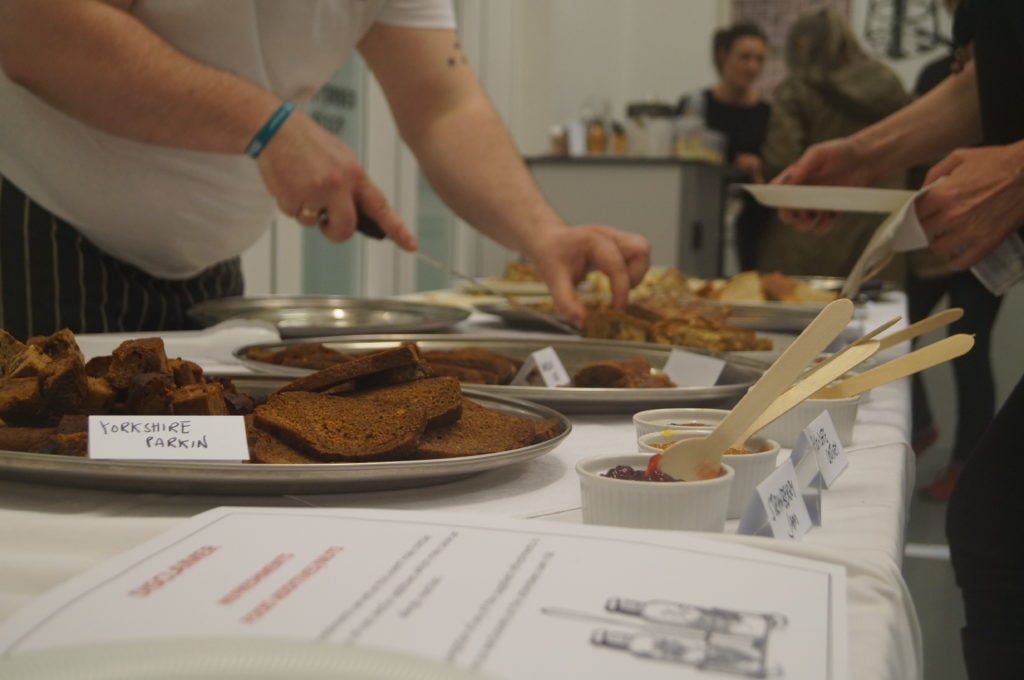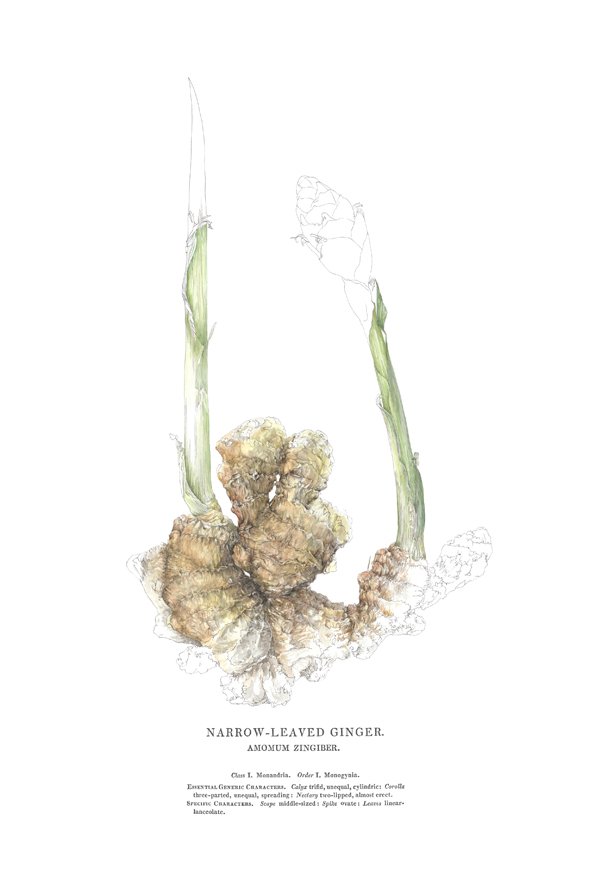Review: The Victorian Dinner Table at Leeds Central Library
May 14, 2016

Image by Laurie Garrison
The Victorian Dinner Table exhibition at Leeds Gallery, presented as part of the Leeds Indie Food Festival, opened on Tuesday evening with a tasting menu inspired by Victorian cookery books. The primary inspirations for the exhibition were Mrs Beeton’s Book of Household Management and Good Things Made, Said and Done for Every Home and Household. The artwork by Lorna Barrowclough, Laura Slater, Frances Lee, Biserka and Kate McGuire interpreted the contents of these cookbooks in modern ways, each via a different medium.

Laura Slater
Laura Slater’s screenprints, which used Beeton-inspired iconography, brought elements of Victorian print into the twenty-first century by placing them into an abstract pop art style of image. Kate McGuire was clearly inspired by the Victorian interest in ginger, creating an accordion-folded ‘scrap book’ that featured the ginger beer section of the Book of Household Management as well as an oversized illustration of the ginger plant in the style of Victorian botanical treatises. Lorna Barrowclough reimagined some common objects found on the Victorian dinner table—salt, oysters and silver—into a single object, a delicate, modern
salt cellar.

Kate McGuire
Biserka’s set of three textiles, encased in embroidery circles, set out to examine the women who used these Victorian cookbooks. The shadowy, abstract images created by the artist hinted at secret inner lives of the Victorian women who were cooking and managing households. Frances Lee’s ceramics reproduced images from the Book of Household Management onto a variety of pieces that could be found on a dinner table. Her use of gold detail and deliberately imperfect style set out to reflect the contrast between rich and poor in the Victorian period.
The artwork in The Victorian Dinner Table is well worth seeing but, for me, the Victorian food prepared by Chef Robbie Andrews of Whitelocks Ale House stole the show. The tasting menu included savouries as well as sweets: onion pie, brain terrine, savory pudding, calf’s foot jelly, vinegar cake, parkin, dandelion cake and pepper cake. The cakes were served with apricot and strawberry jam as well as a fig and date preserve. It all looked fantastic though it was hard to miss the glaringly obvious lack of green. Clearly Victorian eating habits did not include a five-a-day rule.
Robbie researched Victorian recipes in a variety of books at Leeds library and personally collected the dandelions for the cake on Tuesday morning. The savory pudding was an interesting mix of stale bread, oats, and other ingredients. The vinegar cake was a surprisingly sweet eggless cake and the pepper cake was sweet with an intriguing pepper aftertaste. I left the brain and foot dishes, I have to admit, to those with more adventurous palates. This was such an effective way of bringing Victorian food and eating to life for the audience that the organizers really should be commended for their creativity.
My only complaint is that the food was only available on the evening of the opening and, not surprisingly given the quality of food on offer, the Victorian Candlelight Banquet Whitelocks is hosting for LIF16 is sold out as well. We should all be looking out for more opportunities to try Robbie Andrews’ Victorian food in future. In the meantime, it is well worth visiting the Victorian Dinner Table to get a feel for the way the Victorians enjoyed their food as well as how we can creatively interpret their customs today.
The Victorian Dinner Table is running until the 31st May. Visit the website for more information.
Read more from Laurie at www.lookingforxanadu.co.uk.




Comments